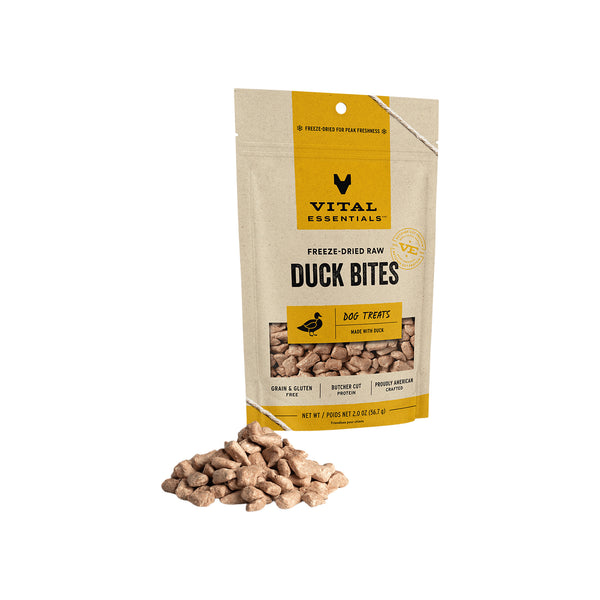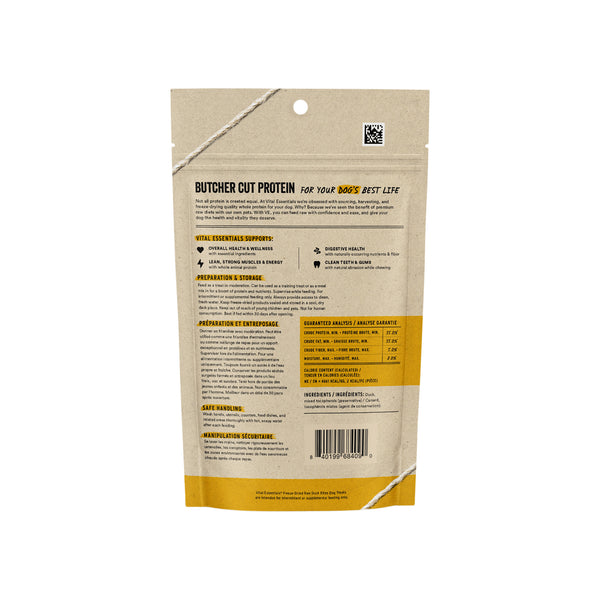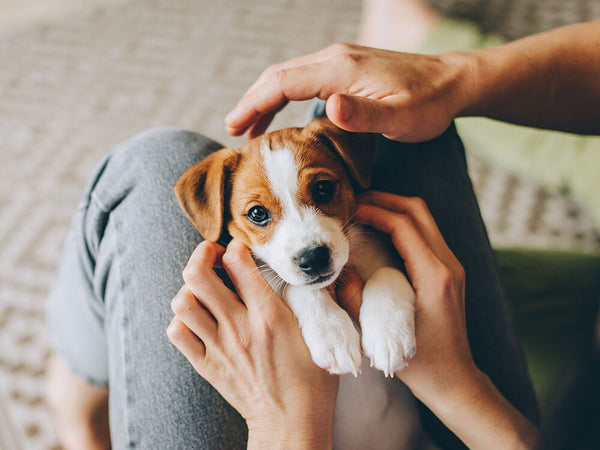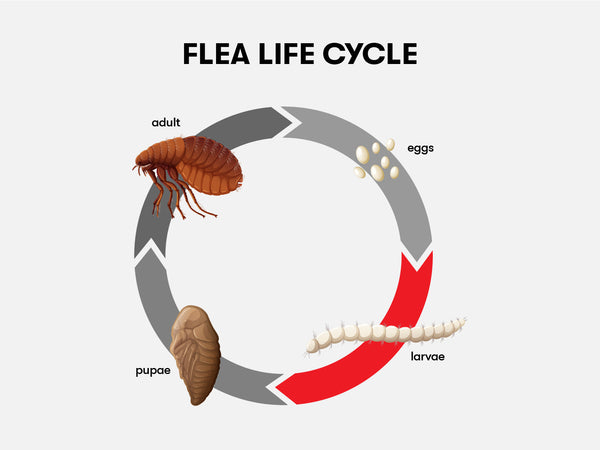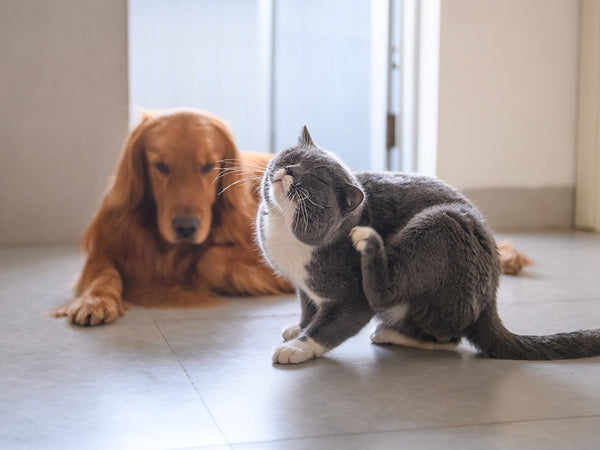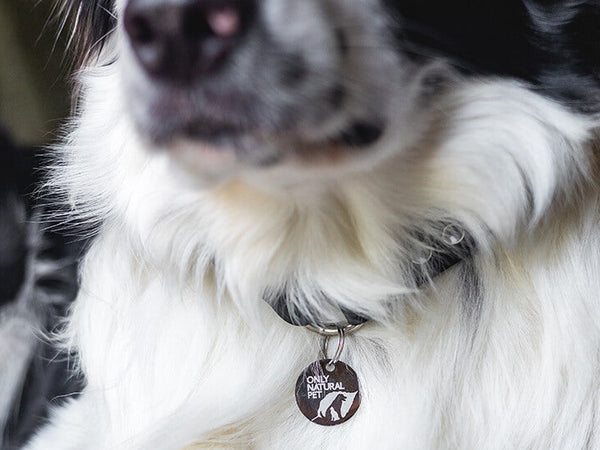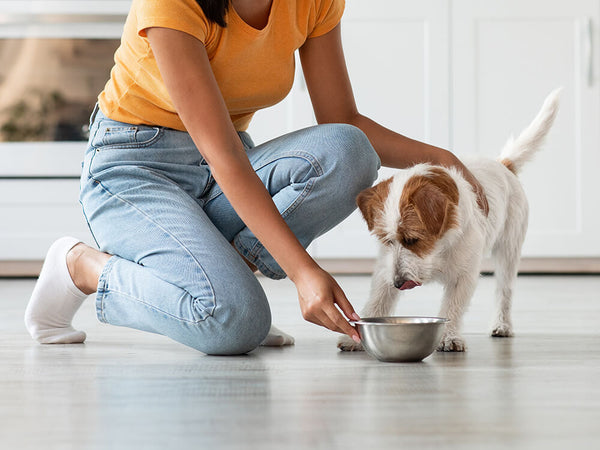5 Essential Commands Every Dog Should Know
Written by: Richard Rowland
January is National Train Your Dog Month, and it's the perfect time to get your pup up to speed on basic obedience commands.
While training your dog can mean teaching them fun party tricks, most dog training is for practical purposes. Teaching your dog a few basic commands helps build their confidence, strengthens your relationship, and – most importantly – keeps them safe in dangerous situations.
If you're new to dog training, it can be daunting to know where to start when there are seemingly endless possibilities of what you can teach your dog. But don't worry, we've got you covered! Read on to learn the 5 essential commands that every dog should know.
Things You'll Need to Get Started
Before you start training, it's important to have the right tools. Here are a few essentials:
- Training treats. These should be small, tasty treats that your dog will find irresistible.
- A dog treat bag (optional). A treat pouch or bag can help you keep treats handy while you’re training.
- A sturdy leash and collar. Make sure they fit your dog snugly and comfortably.
- A quiet, distraction-free environment. Pick a spot in your home that's relatively peaceful, like a spare bedroom or den.
- Patience and consistency. Your dog won't learn a new command overnight, so it's important to be patient and consistent with your training sessions.
The Commands
Now that you have all the necessary tools, let's get to the commands! Here are 5 essential dog commands that every pup should know:
1) Sit
Sit is typically one of the first commands that dog parents and trainers will teach a dog because it offers many benefits.
Sitting is incompatible with many of your pup's unwanted behaviors, like jumping up on visitors or counter-surfing. If your dog starts to display these unwanted behaviors, you can put them into the "sit" position and reward them for their good behavior.
Over time, your dog will understand that sitting gets them what they want (a treat or praise) quicker than the other behavior does.
How to Teach Your Dog to Sit
One of the easiest methods to teach your dog to sit, especially if they're food-motivated, is to use lure and reward training.
Hold a treat near your dog's nose while they're standing. Slowly lift the treat over your dog's head, and your dog will want to follow the treat with their nose. As your dog lifts their head to follow the treat, they should naturally drop into a seated position.
As soon as your dog's bottom hits the floor, praise them and offer the treat as a reward. Alternatively, you could use a clicker to mark the behavior as well.
Repeat this method until your dog starts to quickly and reliably follow the treat and sit. From there, you'll want to phase out the treat and use an empty hand instead.
Follow the same steps using your empty hand as a signal for your dog to sit. Reward them each time they sit, so your dog can connect the dots. Once they seem to get the hang of the hand signal, you can introduce the verbal cue "sit" alongside the hand signal.
2) Down
Down is another important command that can be used as a tool to manage your dog's unwanted behaviors.
If your dog gets overly excited by visitors to your home, sounds outside, or just too much playtime, "down" is a great way to get them to relax. It's also incompatible with jumping and counter-surfing behaviors, similar to sit.
Down is also a great first step toward other popular commands, such as "roll over" and "place."
How to Teach Your Dog to Lie Down
Lie down is another command that's easily taught with lure training, and it's a great natural next step from "sit."
With your dog in a seated position, hold a treat in front of their nose. Slowly move the treat toward the ground and closer to you, encouraging your dog to follow with their nose. If your dog struggles to get all the way down, try pulling the treat further away from their body.
As soon as your dog is all the way on the ground, use your clicker or praise to mark the behavior and give them the treat. Repeat these steps until your dog reliably lies down, then practice with no treat in your hand.
Once your dog reliably responds to your empty hand, add in the word "down" and continue practicing.
3) Recall
Teaching your dog to have a reliable recall is one of the most important safety measures you can have when you take them in public.
A recall means that your dog will come to you when you call. While you can't guarantee your dog will always listen to you, with enough practice, they should come to you 99.9% of the time.
A reliable recall helps keep your pup from getting lost, keeps them under control at the dog park, and can save their life if they're ever in a dangerous situation.
How to Teach Your Dog Recall
Unlike sit and down, training recall is a slow-and-steady process that involves capturing the behavior as it happens instead of luring the behavior. You can, however, create training moments by making it a game for your dog.
Start in your house in an area with minimal distractions. Pick up a toy or a tasty treat and offer it to your dog. When they come to you, praise them and reward them with whatever prize you offered at the beginning.
Repeat this as many times as you can, always rewarding your dog for coming to you when called. When your dog becomes reliable inside the house, you can try this method in your backyard, then slowly try it in more areas.
You want to make coming to you as exciting and rewarding as possible, so your dog views the command as a fun experience. While it can be tempting to call your dog at the park, then put the leash on them and leave, this doesn't build a positive association in their mind.
Instead, practice recall in as many situations as you can, always rewarding your dog for responding. The key to keeping the recall reliable is to practice the behavior all the time.
4) Stay
Stay is another command that can work as both a behavior deterrent and a safety measure.
You can use "stay" to keep your dog from bounding out of the car or your house when you open the door, bombarding guests, or in other situations where you need your pup to practice impulse control.
How to Teach Your Dog to Stay
Teaching stay needs to be done in baby steps because it goes against everything your dog wants to do. While you can entice your dog into a "sit" or "down" by luring with a treat, "stay" requires them to wait and think about their next action.
Start by putting your dog into a sit or down position, then give them your chosen hand signal for stay. Many trainers opt for holding up an open palm.
Take one step away from your dog, then wait a few seconds. If your dog stays in their position, praise them and offer them a treat. Keep using this method while slowly increasing the number of steps you can take away from your dog.
Once your dog understands the hand signal, you can start to introduce the "stay" vocal command.
5) Leave It
"Leave it" is another key impulse control command that can keep your dog safe, especially if they're curious on walks.
You can use it to prevent your dog from eating something toxic they found on the sidewalk or as the beginning of training your pup not to chase the squirrels in the park.
How to Teach Your Dog to Leave It
To introduce the concept of "leave it" to your dog, start with a treat on the floor and place your palm over it.
Your dog will naturally try to get the treat, but don't let them have it. Instead, wait for them to stop trying. As soon as they stop, mark the behavior and reward them with praise and a different treat (not the one on the floor).
Continue this method again, increasing the time that your dog needs to wait before they're rewarded. Slowly, your dog will learn that going after something isn't the most effective way to get what they want.
As your dog starts to catch on, introduce the phrase "leave it" as the vocal cue.
Are You Ready to Train Your Dog?
While training your dog can seem overwhelming, it can also be a great opportunity for you to bond and have fun with your dog while they learn new skills - whether they're a puppy or a newly adopted senior dog.
With enough practice and patience, your dog will learn these essential commands in no time. So, this National Train Your Dog Month, why not give it a try? Good luck and happy training!
Check out our online store to choose from a wide range of training treats, collars, leashes, and other training essentials.






